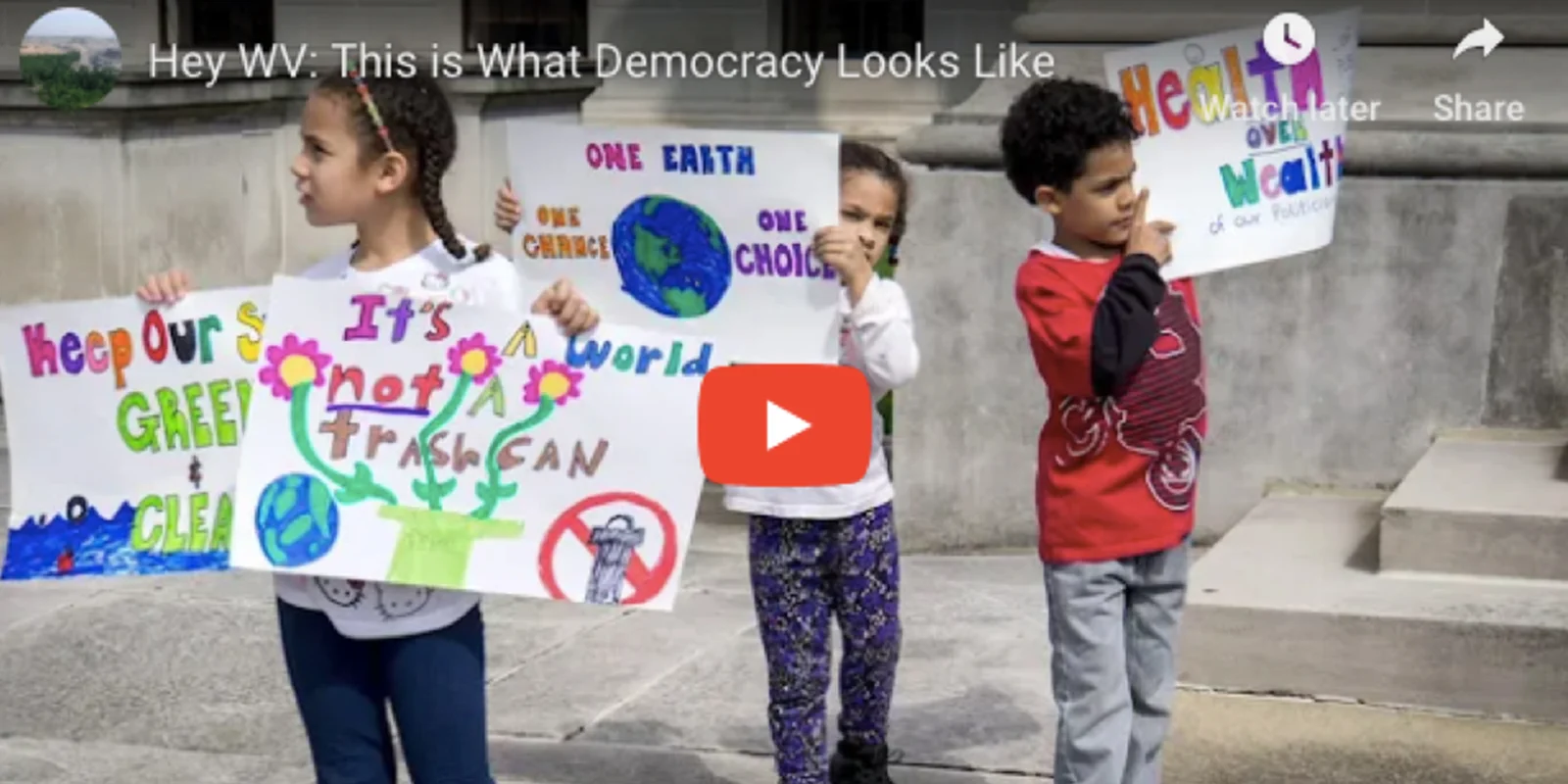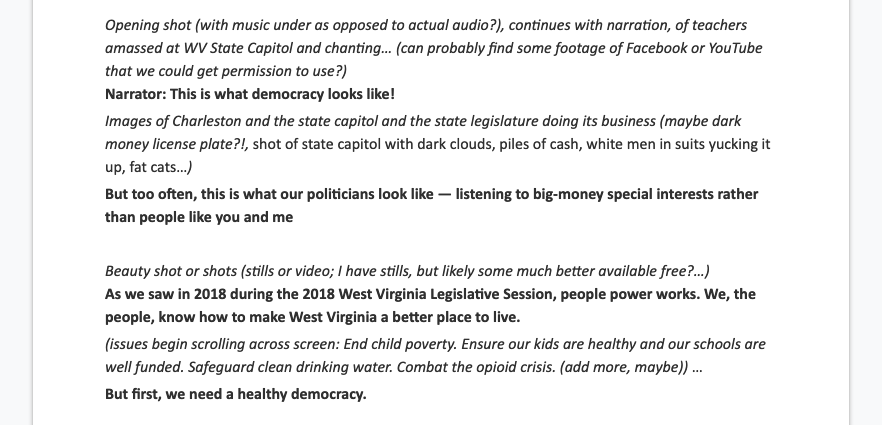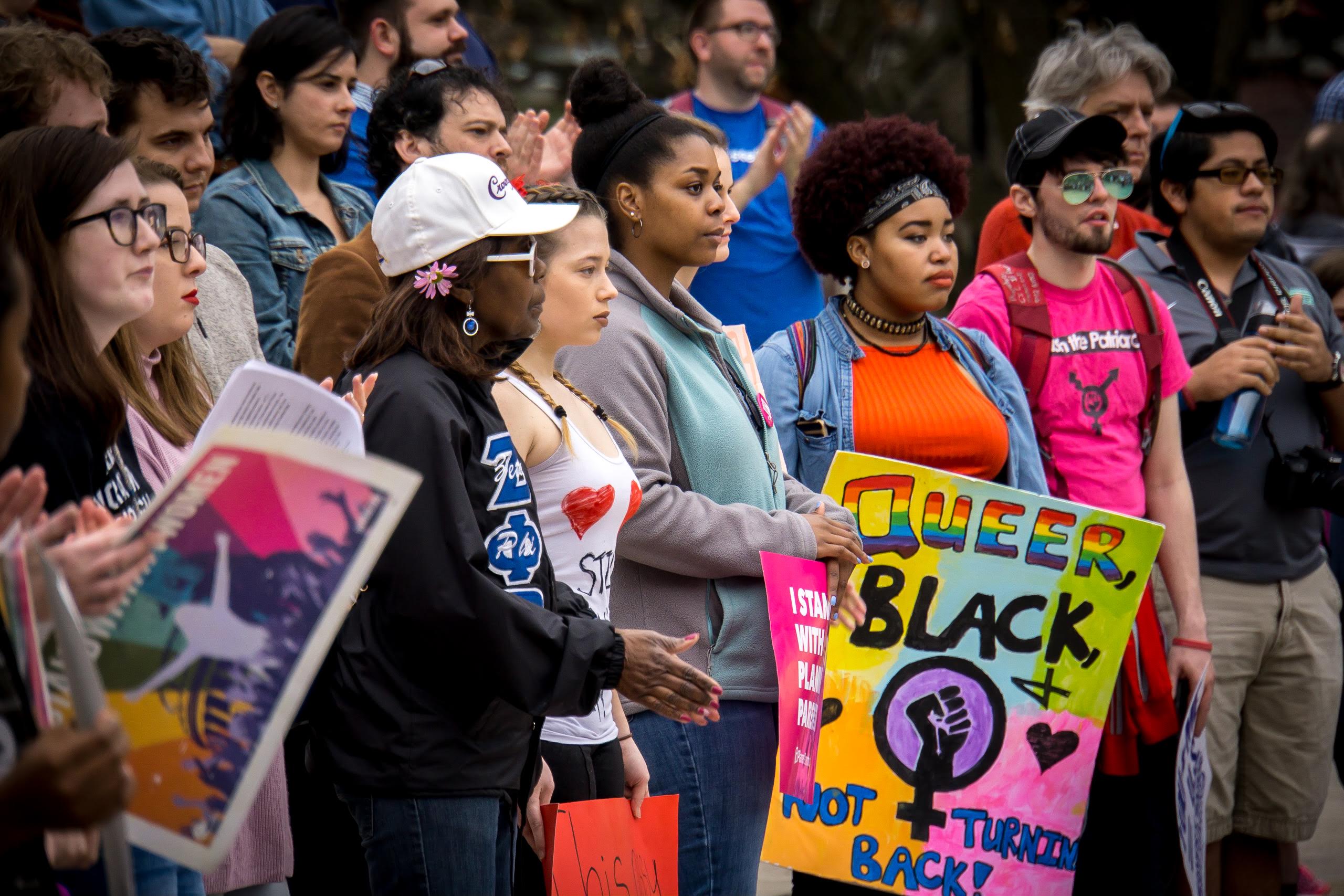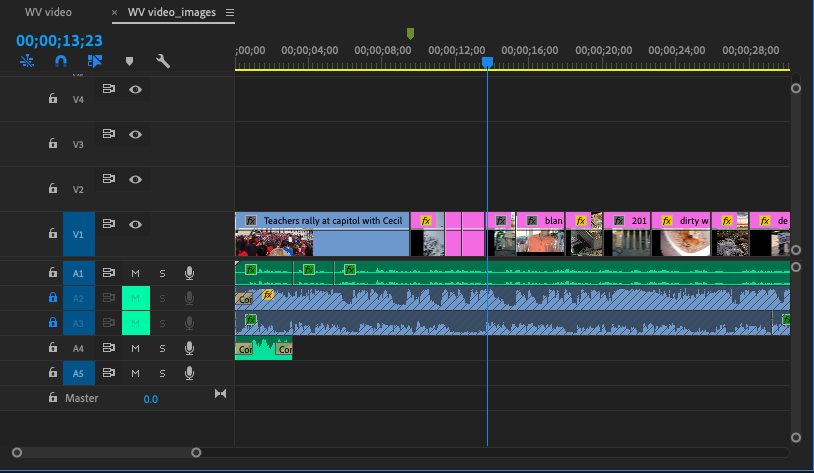
So You Want to Make a Video: How WV Activists Made a No-Budget Video to Announce Their Campaign
Video is a compelling way to communicate lots of information quickly. With Facebook and other platforms prioritizing video on timelines, news publications looking for video opportunities and pitches, and people absorbing more video content than ever online, it only makes sense to add it to your media skills repertoire. We’ve heard from lots of people wondering how to incorporate more video into their campaigns and outreach, but they are also worried that making video content is outside of their budget. It doesn’t have to be.
Of course, there are many types of social media video from one-off live-video snap-chats to high-production storytelling. This post walks through a budget-conscious video production process.
Before you make a video, make sure you know why you want to make that video: What are your goals for it? Who is the audience you are trying to reach? And what platform or platforms will you use to distribute it?
West Virginia Citizens for Clean Elections needed a no-budget campaign announcement video. The organization had a specific need and campaign, an audience in mind, and a promised platform for the video to live once it was made. But, as many can relate, they weren’t sure where to even begin with creating the video. Did they need to hire a production company, buy software, hire a voice actor, write a script?
Here’s what they knew:
- They needed this video in order for their Pro-Democracy, Anti-Corruption Platform to be included as a part of a larger coalition’s priorities.
- The audience would be members of the various coalition groups, including environmentally-conscious West Virginians, union members, anti-racist groups and their members and allies, and of course, their own good-government members.
- Their video would be promoted as a priority on the website of the coalition, but they also wanted to make sure that the video could serve to increase their audience and engagement on social media channels throughout the campaign.

As the title promises, this was a no-budget video, so they weren’t going to hire actors, build a set, or record much in the way of original video. They had to use what they had—strong spokespeople, a powerful campaign platform, and a history of showing up for many of the important fights in West Virginia.
ReThink helped the organization draft and edit an audio-visual script, utilizing many of the frames laid out in our money in politics message guidance and specifying the ways that barriers to a free and fair democracy prevent action on many of the issues the members of this coalition care about. And on the visual side, the script also outlined the places where we wanted to see titles and particular imagery.

Here are two ways to format a video script. Notice how both deal with both the audio and the visuals. Also notice that a lot changed from script to final video and that’s normal.
We quickly identified a good spokesperson to record the audio. She even does a podcast. While we waited for her to record the script into her phone (in a quiet place; in this case, a parked car), we set about collecting images and video that we had access to and permission to use. Using Google Image Search’s ability to filter for usage rights can help you find royalty-free and creative commons images (“Labelled for Noncommercial reuse”). Even better, we had access to live video posted on WV Clean Elections’ Facebook account and a member-photographer who was willing to donate his images. Pro tip: Keep these assets organized in some way that makes sense to you! You will thank yourself later.

Much thanks to Chad Cordell for these great photos. See more of his work in West Virginia in these videos. We also found royalty-free photos from the state legislature’s own website, and Vivian Stockman of the Ohio Valley Environmental Coalition.
Making the video itself might seem like the most daunting part, but editing a video is a lot like writing and editing the script itself: draft, review, edit, and repeat. There are many online resources for learning the basics of how to use free or cheap video editing tools like iMovie, Adobe Rush, Adobe Premiere, DaVinci Resolve, or Hitfilm Express. Most are designed intuitively, to have you learning basic editing skills in no time. If you really don’t have the time or internal capacity to edit it yourself, try asking some of your volunteers or members if they might have the time or skills you need. No matter who ends up doing the editing, it always helps to select a few example videos you would like to emulate the design and style of beforehand.
Start by uploading the recorded version of the script in your editing software to guide the timing of the video. Once that audio track is there, add the images and video you brainstormed, following along with the script, and get a draft down for review.
Then keep making new versions you can review with your team with a couple of principles in mind:
- You don’t have to be done editing the script—always make it shorter if you can; keep the pace up in imagery and keep the images moving to hold the limited attention of online audiences.
- Feel free to experiment with design and titles if you want, but when in doubt, keep it simple. White or black text stands out best on top of most images.
- Try darkening, lightening, or blurring the images behind the text to add more clarity to the words.
- Refer to the example videos you identified for inspiration.



The photo and video elements of the WV video on an Adobe Premiere Timeline. Notice how quickly the images change. The timing of these changes lines up with beats in the script. After this, we just added text, titles and a white background underneath.
Music can help keep the energy up in your video, and there are many resources online for royalty-free music. Keep in mind that with these resources, like the Free Music Archive, you will likely have to work your way through many tracks before finding one that will work. Again, ask your volunteers. You might be surprised who is a musician who can make a simple and energetic guitar or piano loop to put behind your video.
When you finalize your video, make sure to upload it directly to the social channels you are promoting it on. Ask your allies to help promote it. And don’t forget to add subtitles. Not only will your deaf allies and those with hearing loss appreciate it, but videos on Facebook with subtitles perform significantly better (perhaps because the majority of viewers who don’t turn their sound on can still follow and engage with the video).
You can even put a bit of money toward boosting its presence as an ad. Don’t forget to measure its performance: Did the video accomplish the goals you set out for it? Should you try something different next time?
Take a look at how these steps all came together in the final West Virginia Clean Elections campaign video.
This may not be the guide for your most important campaign videos, where you may have a budget to hire a video production company, but even in that case, knowing some of these basics can help you navigate the process from the client’s prospective.
Moreover, in an age of social media that rewards experimentation, authenticity, and rapid responses to the news of the day, the kind of production outlined above should help you add video to your communicator’s tool belt when thinking about strategic ways to reach your audiences.


